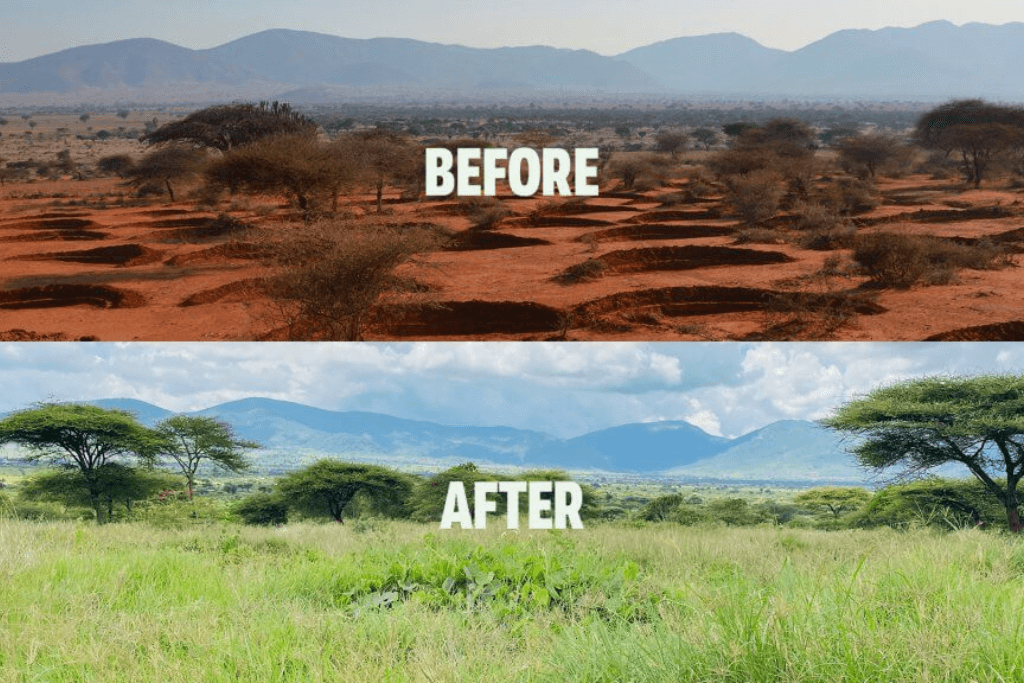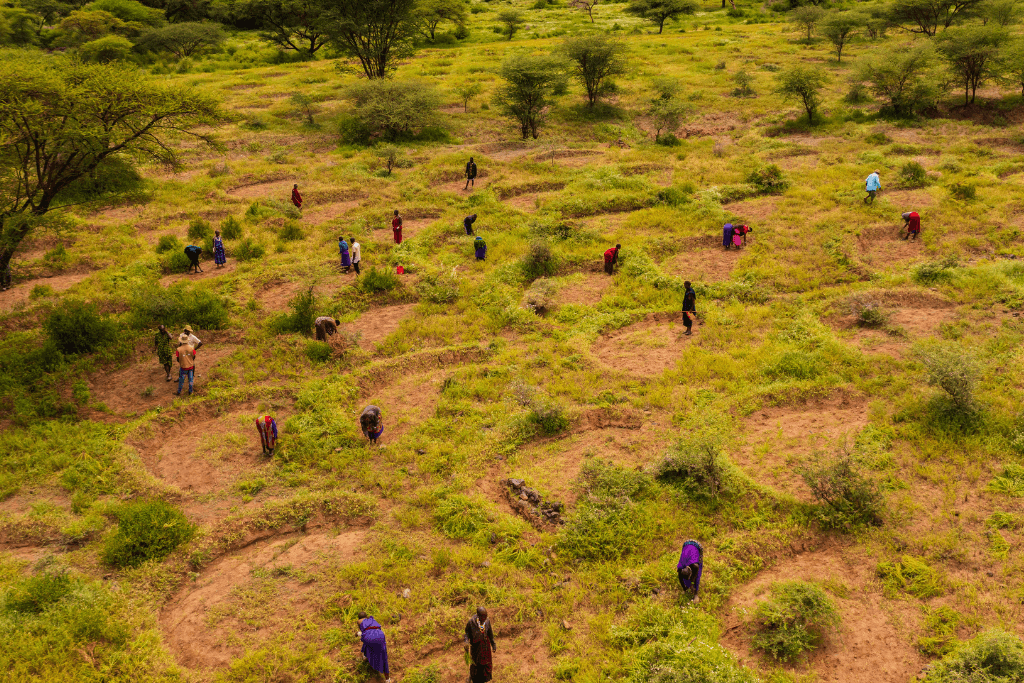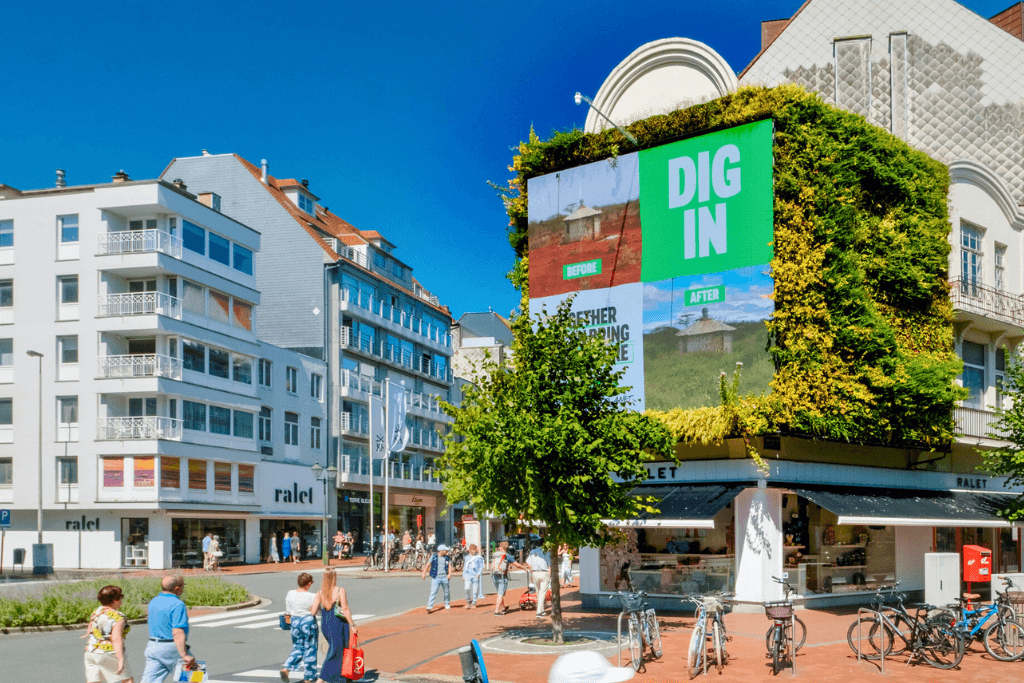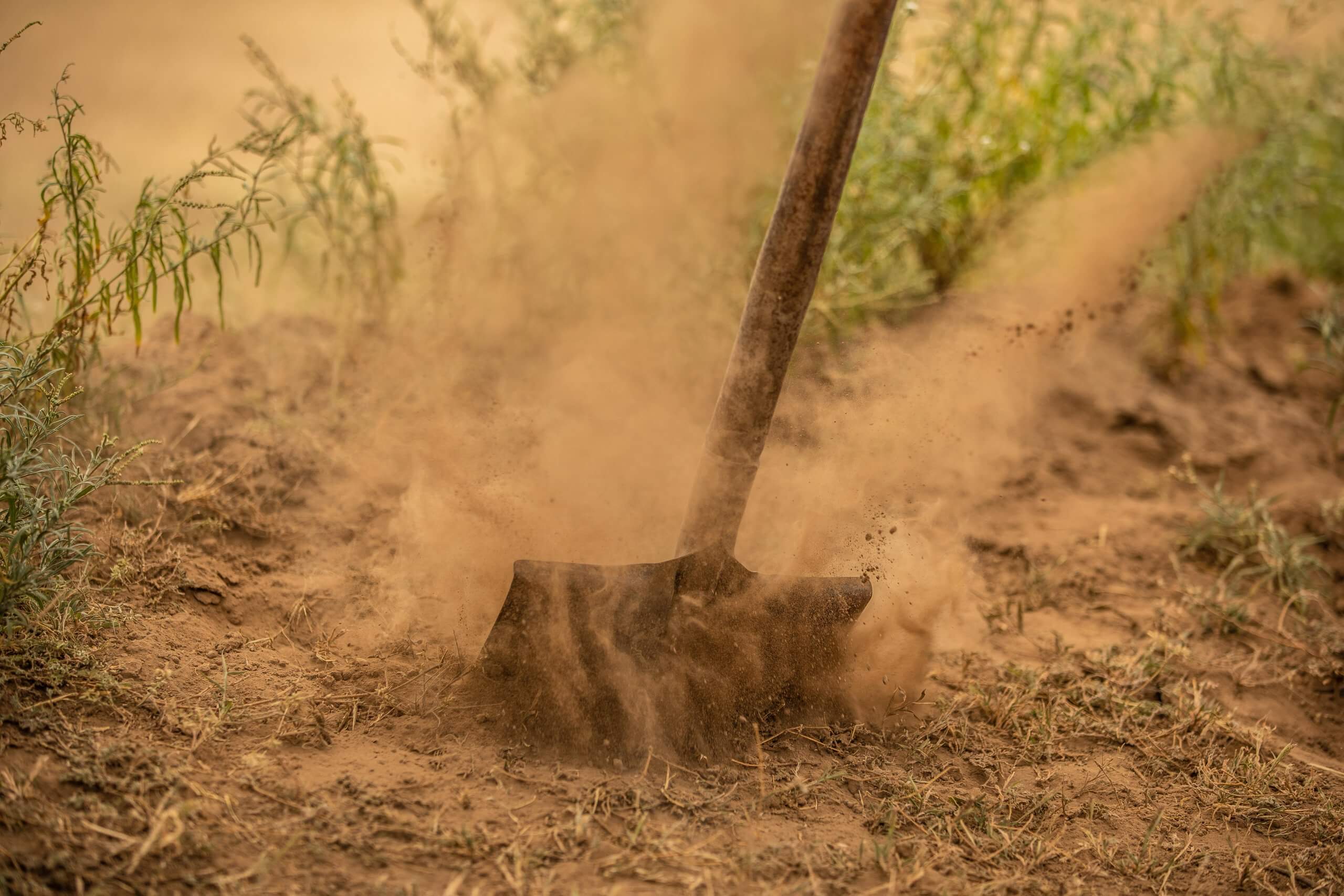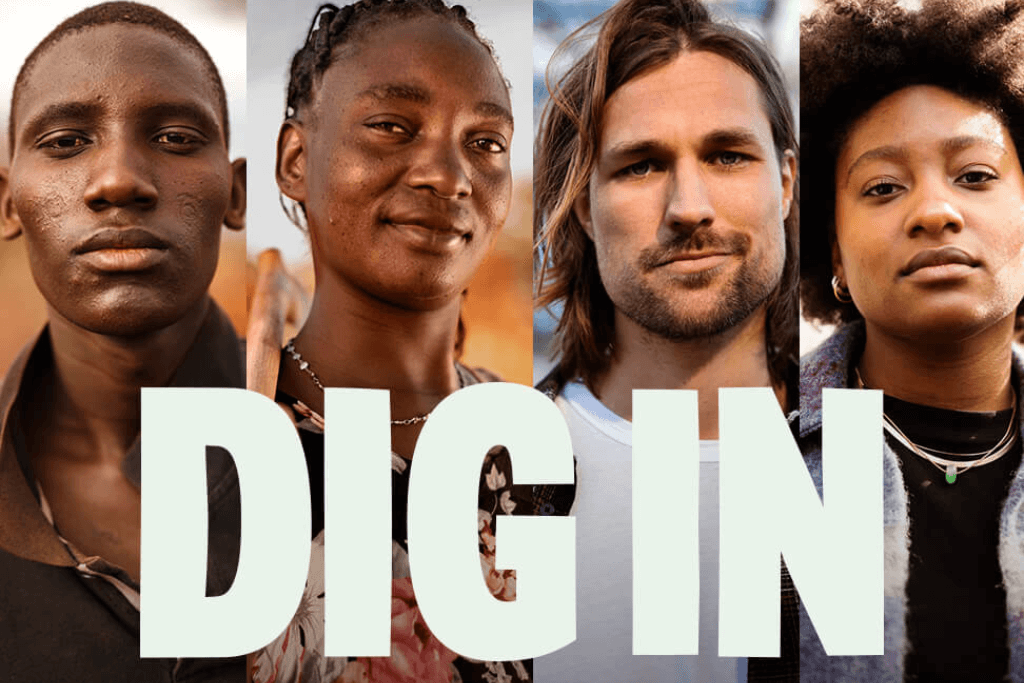Project update | 2024
Let’s start with an update on the Regreening Programme as a whole…
With the help of your fantastic support, the Regreening Singida Programme has made remarkable progress throughout the reporting period!
Let’s get to the most important results first. The programme is currently divided into four clusters: Cluster A, Cluster B, Cluster C and Cluster D. We’re thrilled to report that, by July 2024, a total of 6,775,575 trees have been restored, and over 46,119 metres of Fanya Juu trenches have been dug. And that’s not all: 67,323 households across 166 villages have been trained so far!
This progress is driven by a range of activities, including movie roadshows, ward events, and continuous coaching and mentorship provided by District Coordinators. Supportive supervision through field visits is actively taking place across Clusters A, B, and C, offering valuable insights into the ongoing progress in line with the programme’s goals.
Overall, the Regreening Singida Programme is making significant headway in advancing tree restoration and promoting sustainable agricultural practices in Central Tanzania.
Encompassing the Chamwino district in the Dodoma region and the Manyoni and Ikungi districts in the Singida region, has been highly encouraging. Activities have been ongoing in 66 villages, with significant strides made in Treecovery. A total of 31,579 households have received Treecovery training, and 11,361 households have been visited in the programme villages.
A key achievement has been the restoration of 4,508,958 Treecovery trees, surpassing the initial target by 156% as of August 2024. Despite the ongoing dry season, preparations for the October–December rains are in progress. Households are being trained in rainwater harvesting to aid in constructing fanya juu/fanya chini trenches. The total length of constructed trenches remains at 19,714 meters.
Sustaining the impact
Last quarter was all about maintaining our impact in this area. However, as all of our programmes are here for the long run, we also focused on sustaining our long-term efforts in this cluster. As you will see, we took significant steps towards realising our goals and vision: sustainable restoration of degraded ecosystems, thus contributing to climate-resilient communities.
A new strategy
Cluster A came to the end of its intensive restoration period in July 2024. Together with LEAD Foundation, we have been reviewing the sustainability strategy to include the lessons learned from the Regreen Dodoma Programme.
As part of the sustainability strategy, the Kijani app will be introduced, allowing farmers and pastoralists to continue regreening their lands at their own pace. This app will be a key tool for long-term sustainability, helping us to inspire communities and spark new activations together with LEAD Foundation.
Other highlights
- Involving institutions: A main focus point of last year was to increase the involvement of institutions. This worked: institutions and village forest reserves have contributed to the restoration of 968,305 trees, bringing the total number of trees restored by the programme to 4,508,958! Treecovery training was provided to 548 institutions, alongside visits to 144 village forest reserves.
- Community Engagement and Awards: To actively involve the community, six villages from Cluster A (Kinku, Mungaa, Gurungu, Mpola, Mjelo, and Idifu) were awarded 1,500,000 TZS (450 EUR) each for their support of the programme, with the community selecting contributions like school desks and renovation projects based on local needs.
- Stakeholder Advocacy: The Manyoni District Coordinator participated in a workshop focused on ecosystem restoration for the Itigi Thicket and Miombo Woodland, advocating for the inclusion of the Treecovery intervention in restoration efforts impacted by the Standard Gauge Railway project.
Trees from institutions!
We also focused on involving institutions in our programme last year. We organised Treecovery training for 548 institutions and we visited 144 village forest reserves. In total, 968,305 trees have been brought back by institutions and village forest reserves. This means that the programme brought back 4,508,958 trees by now!
Exchange visits and awarding best villages
To keep engaging local government authorities especially at village level we normally award the best performing villages. These villages are identified based on their support to the program, the size of communal land and community forest that has been set aside for FMNR and implementation of bylaws. Identification is done on yearly basis.For this year, 6 villages (Kinku, Mungaa, Gurungu, Mpola, Mjelo and Idifu) from cluster A managed to receive awards worthing 1,500,000Tzs (450Eur) per village given in kind. The community is given a chance to decide on the type of in kind contribution they require based on the prevailing needs of the community. Desks for schools, renovation of village offices, school roofing and beehives were the most chosen in kind contribution with a community benefit.
Stakeholder meetings and advocacy
The Manyoni District Coordinator participated in a stakeholders’ workshop held at the Standard Gauge Railway (SGR) Itigi camp, focusing on the Itigi Thicket and Miombo Woodland Strategy Framework organised by the Tanzania Railways Corporation. The workshop focused on planning for ecosystem and biodiversity restoration, rehabilitation, and offsetting of the Itigi Thicket and Miombo Woodland impacted by the SGR project from Makutupora to Tabora. The Manyoni District Coordinator, shared the experience and successes of the RSP. The participants proposed including the Kisiki Hai intervention in restoration and offsetting efforts for the areas which have been affected by the railway construction.
